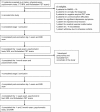Blood-brain barrier opening in Alzheimer's disease using MR-guided focused ultrasound
- PMID: 30046032
- PMCID: PMC6060168
- DOI: 10.1038/s41467-018-04529-6
Blood-brain barrier opening in Alzheimer's disease using MR-guided focused ultrasound
Abstract
Magnetic resonance-guided focused ultrasound in combination with intravenously injected microbubbles has been shown to transiently open the blood-brain barrier, and reduce beta-amyloid and tau pathology in animal models of Alzheimer's disease. Here, we used focused ultrasound to open the blood-brain barrier in five patients with early to moderate Alzheimer's disease in a phase I safety trial. In all patients, the blood-brain barrier within the target volume was safely, reversibly, and repeatedly opened. Opening the blood-brain barrier did not result in serious clinical or radiographic adverse events, as well as no clinically significant worsening on cognitive scores at three months compared to baseline. Beta-amyloid levels were measured before treatment using [18F]-florbetaben PET to confirm amyloid deposition at the target site. Exploratory analysis suggested no group-wise changes in amyloid post-sonication. The results of this safety and feasibility study support the continued investigation of focused ultrasound as a potential novel treatment and delivery strategy for patients with Alzheimer's disease.
Conflict of interest statement
N.L. (chair), K.H., and S.E.B. have received an honorarium for serving on an expert steering committee on focused ultrasound in AD. K.H. is an inventor on intellectual property owned by Brigham and Women’s hospital in Boston and Sunnybrook Research Institute in Toronto related to intracranial focused ultrasound technology. Y.M., A.J.B., Y.H., B.L., M.M., N.H., C.H., I.A., A.B., and G.S.S. declare no competing interests.
Figures



References
Publication types
MeSH terms
Substances
Grants and funding
LinkOut - more resources
Full Text Sources
Other Literature Sources
Medical

